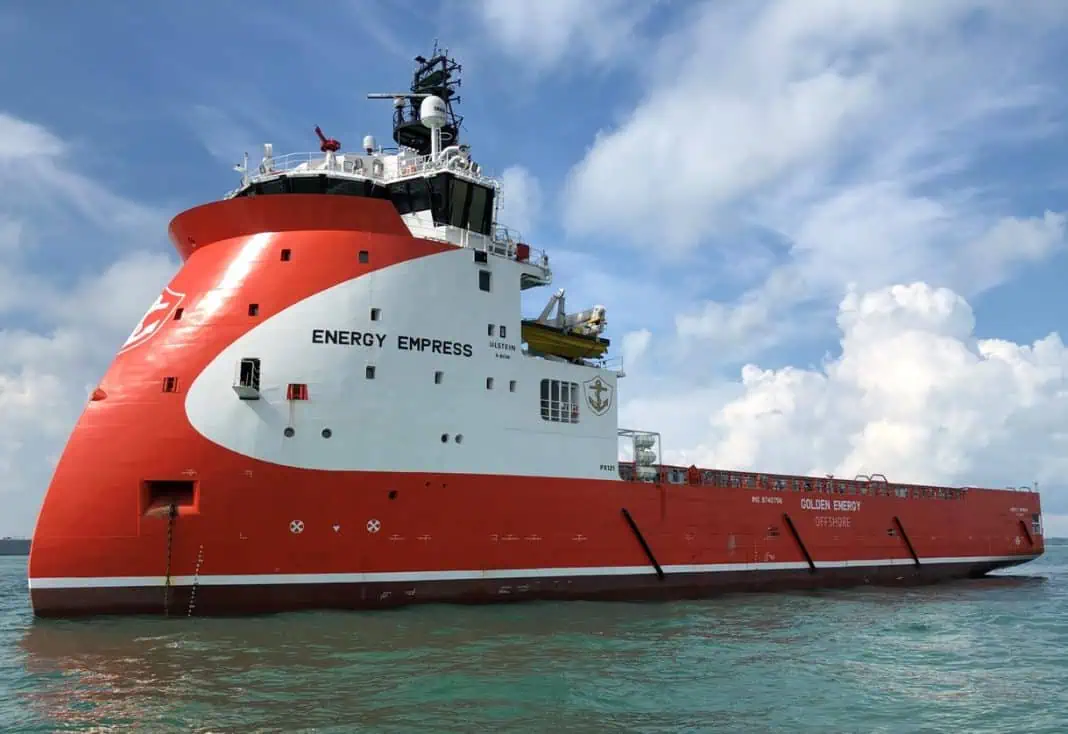As a response to the maritime industry’s growing appetite for data to serve sustainability and crew-welfare imperatives, shipowners in the OSV sector are increasing bandwidth and adopting value-added services as their digitalisation journey progresses and their requirements evolve.
The digitalisation of the shipping industry, itself driven by environmental and crew-welfare imperatives alongside technological advancement and growing competition, is resulting in a significant increase in vessel data consumption.
According to latest Inmarsat statistics, monthly average total network usage in the maritime sector was 44.68% higher at the halfway point of 2022 than in 2021. If overall demand for bandwidth from shipowners is growing fast, however, demand in the offshore vessel sector is even stronger: here, Inmarsat logged a 46.79% growth in network use over the same period.
To continue meeting the demand, offshore vessel connectivity solutions must also evolve, to support long-term efforts towards decarbonisation and the improvement of crew welfare.
Digital decarbonisation driving data use
The current increase in data use in the support vessel sector is in part a reflection of the offshore industry’s ambitions to achieve greener and more efficient operations. As tightening environmental regulations encourage owners and operators to monitor the performance of their ships and shipboard equipment – and adopt digital solutions to analyse and act on the insights gleaned – bandwidth demands are soaring.
The process of capturing large quantities of data from numerous shipboard and external sources, storing and analysing this data, and then transferring it to various stakeholders is now an established part of offshore support vessel operations and one that plays an integral role in decision-making for many companies. Similarly, digital solutions that allow owners to enhance efficiency in areas such as route/voyage planning and fuel consumption are now a common feature aboard vessels.
Monitoring performance and running advanced, cloud-based applications necessitate high network stability and considerable bandwidth – and as ships become more digitally mature, with a greater number of advanced applications, these requirements continue to grow.
Crew welfare high on the agenda
In an increasingly digitalised, connected maritime environment, it is not only vessels becoming more dependent on data, but also the crew on board. Since the onset of the Covid-19 pandemic, several high-profile incidents have drawn attention to the difficulties facing seafarers, with the infamous crew-change crisis depriving shipboard personnel of timely shore leave and repatriation. Many owners and managers have responded to this situation by investing in better connectivity for crew and offering access to digital services such as 24-hour helplines. This trend, along with the now-mandatory requirement for seafarer connectivity recognised by the Maritime Labour Convention, has contributed to a 50% increase in total crew network use in the last year.
The moral issue aside, paying crew welfare the attention it deserves is a prudent business decision for owners and operators. With seafarers today comparing employers on their ability to provide fast and reliable Wi-Fi and deliver high-quality online services, connectivity is now essential to an OSV operator’s competitiveness.
Remote, automated, and data-intensive
Another trend contributing towards the current rise in data consumption is the increasing use of technology to enable remote and automated processes.
In modern offshore operations, the vessel is coming to represent an extension of its operator’s headquarters – a floating operations centre that must maintain contact with shore-based offices and other ships at all times. For many owners, email services alone are no longer sufficient; video-conferencing, a particularly data-intensive activity, is a cornerstone of today’s connected fleet and has contributed to a 32% increase in monthly average network usage across maritime and offshore operations from 2021 to 2022 (as of June).
Similarly prevalent in modern shipping, and especially useful to offshore asset uptime, are remote inspections and maintenance, with companies looking to reduce costs and downtime by allowing vessel inspection and equipment servicing at sea. Like the use of automated processes that reduce the burden on crew and the risk of human error, remote servicing has clear benefits but also considerable bandwidth requirements.

Fleet Xpress Enhanced as a digital enabler
As a response to the industry’s growing data requirements, Fleet Xpress Enhanced is the latest evolution of Inmarsat’s transformational connectivity service. Offering a versatile, integrated, and modular solution that draws on the world’s most secure and reliable satellite network, it enables real improvements in operational efficiency, sustainability, and crew welfare, enabling owners to upgrade their bandwidth allowance and adopt new applications as their needs change. Further, Inmarsat partners are provided with a platform to deliver their value-added services and host applications, with shipping companies in turn gaining access to an array of functionality ranging from email and basic office tools to the latest IoT-powered solutions.
Crucially, the solution is future-proofed for seamless integration with other communications networks, a concept Inmarsat has dubbed ORCHESTRA. This approach promises to redefine connectivity at scale with the highest capacity for mobility worldwide and at hot spots around the globe.
ORCHESTRA – so named because it brings together multiple components in perfect harmony to produce something far greater than the sum of its parts – is designed to meet the accelerating bandwidth requirements of modern shipping. It combines our geosynchronous – or GEO – networks, ELERA and Global Xpress, with terrestrial 5G and targeted low-Earth orbit – or LEO – satellites.
The result is a single, advanced solution for global mobility that will offer the fastest average speeds and the lowest average latency of any network – either planned or in existence – with seamless connectivity around the world.
At a time when OSV operators’ requirements are evolving rapidly, and maritime data use is skyrocketing as a result, our aim is to provide a clear and flexible path to digital transformation – whatever stage of their journey they have reached. Wherever the data-driven vessels are sailing – however remote – they will be able to rely on high-speed connectivity to facilitate safe, efficient and sustainable operations. The only limit to their potential is the creativity of the technology solution and applications for which Inmarsat will offer continuous, global access.












